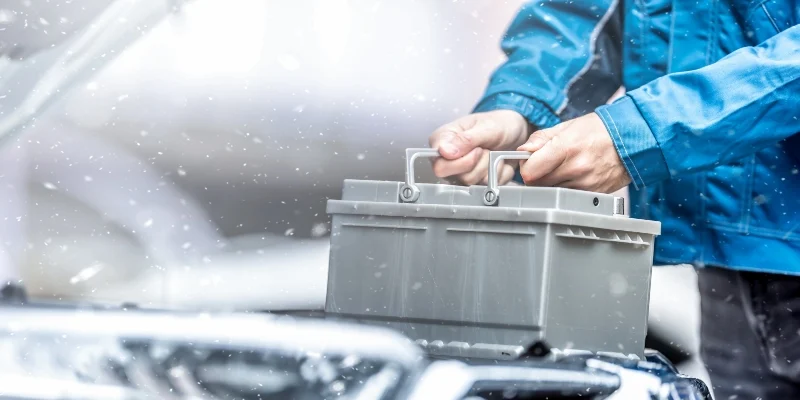
Winter is coming, and for electric vehicle (EV) owners, that means worrying about how the cold will impact your driving range. Is battery performance optimized in cold weather, reducing how far you can go on a single charge? Understanding why this happens and what you can do will help keep your EV running smoothly all winter.
Table of Contents
How cold weather impacts battery performance
There are a few key reasons that cold temperatures sap your EV battery’s strength:
- Chemical reactions slow down – The chemical reactions that allow batteries to store and provide energy occur more sluggishly. This limits their charging and output capabilities.
- Batteries have to work harder – In cold weather, the battery’s internal resistance increases, forcing it to work harder to provide the same power level. This drains the battery faster.
- Regeneration is reduced – Braking energy recovery recharges the battery. But it is much less effective in cold weather, providing less of a range boost.
- More power is diverted – The battery has to divert power to heat the battery cells and the cabin, leaving less energy available to drive the motor.
How much range is lost in cold weather?

Most EVs suffer a 10-40% loss in range when temperatures drop below 40°F. Colder climates can see a 50% drop or more in subzero conditions.
The exact impact depends on:
- Battery type – Lithium iron phosphate batteries hold up better than NMC and NCA chemistries.
- Vehicle efficiency – Well-insulated EVs with heat pumps lose less range.
- Driving style – Hard acceleration and high speeds use more energy, draining the battery faster.
- Accessory use – Running heat, defrosters, and heated seats require battery power.
- Battery thermal management – Systems that preheat the battery help maximize cold weather range.
- Ambient temperature – The colder it is, the more range is reduced.
Also read: How Can I Maximize Range in My EV in India?
Tips to optimize driving range in cold weather
Here are some key steps you can take to maximize your EV’s cold-weather range:
- Precondition the battery – If your EV has a battery thermal management system, use it to preheat the battery while plugged in. This brings it up to an optimal operating temperature.
- Warm the cabin efficiently – Use heated seats and steering wheels to direct warmth rather than blasting the heat. Only heat the cabin to around 65°F.
- Drive smoothly – Avoid sudden acceleration and braking. It uses more energy than smooth and steady driving.
- Reduce loads – Turn off any unnecessary lights, entertainment, and climate control features. Remove extra cargo weight if possible.
- Keep speeds moderate – Driving faster increases wind resistance and energy use. Obey speed limits and traffic.
- Recharge more often – Plan shorter hops between charging stops rather than depleting the battery fully.
- Park in warm places – Garages, sunny spots, and underground parking help prevent cold-soaking the battery when parked.
What EVs perform best in the cold?

Not all electric vehicles are impacted the same by cold temperatures. Here are some top picks for reliable cold weather range:
- Tesla – Industry-leading battery thermal management and efficient heat pumps result in smaller range impacts.
- Hyundai Kona – Uses a battery heater and heat pump to maintain a range of -10°F.
- Kia Niro – The heat pump provides excellent cabin heating efficiency to conserve range.
- Nissan Leaf – Available battery and cabin preheating help maximize range on cold days.
- Chevrolet Bolt – Battery chemistry and thermal systems make it one of the top performers in cold climates.
The future of cold weather EV batteries
Improving cold-weather battery performance is an active research area in the auto industry. Here are some innovations on the horizon:
- New battery chemistries optimized for low temperatures
- More advanced battery thermal management systems
- Improved heat pump efficiency to reduce cabin heating loads
- New heating elements and thermal materials to keep batteries warm
- Regenerative braking advancements to recapture energy in cold weather
As battery technology evolves, cold weather range impacts should continue to shrink. While EVs face some challenges in winter conditions today, they will only improve in years to come.
So don’t let cold weather range anxiety keep you from going electric! With smart planning and preparation, you can comfortably drive an EV all winter.







